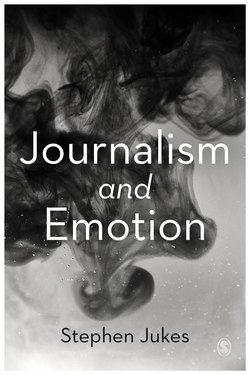Читать книгу Journalism and Emotion - Stephen Jukes - Страница 14
На сайте Литреса книга снята с продажи.
1 Objectivity and Emotion
ОглавлениеThe words stuck in my throat. A sob wanted to replace them. A gulp or two quashed the sob, which metamorphosed into tears forming in the corners of my eyes. I fought back the emotion and regained my professionalism, but it was touch and go there for a few seconds before I could continue …
Walter Cronkite (1997)
In 1963, as he read the news of President Kennedy’s death live on air, the veteran news anchor Walter Cronkite shed a tear. For him that tear was an emotional lapse that threatened to undermine his ‘professionalism’, a carefully cultivated air of detachment that made him America’s most trusted news anchor. It was an era when journalism prized objectivity and, on his death in 2009, Time magazine called him ‘TV’s patron saint of objectivity’ (Poniewozik, 2009). The tear, of course, showed the human side of Cronkite and was arguably one of the reasons why he was so trusted. He was echoing the feelings of millions of Americans. It also illustrates the paradox that lies at the heart of journalism: the constant tension between a journalist’s human emotions and the deeply embedded normative values that are encapsulated by the word objectivity, above all the concept of detachment. On the one hand, journalists are expected to maintain a distance from their subject matter or the scene of action, but on the other hand, as Coward has observed, reportage – one of the cornerstones of journalism – is premised on the first-person presence of the observer and bearing witness (2013: 21, 29).
This chapter examines how emotion was sidelined in the canon of Anglo-American journalism and, in some quarters, became associated with unprincipled and flawed journalism (Peters, 2011: 298). It traces the origin and rise of the objectivity paradigm as the dominant force in the daily discourse about journalism and in universities where journalism is taught. It explores definitions of objectivity and how, because of the fundamental philosophical flaw in the concept, it became embedded in journalism culture as a series of practices. Finally, the chapter explores the persistent challenges to the prevailing norms in the analogue era, from legendary journalists such as the novelist and conflict journalist Martha Gellhorn, to the New Journalism of the 1960s and 1970s, through to journalism of attachment during the Balkans Wars of the 1990s and, finally, the outpouring of journalistic emotion that accompanied the September 11 attacks in 2001.
